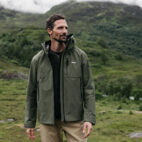Carry Conversations :: Dana Gleason
A new addition to our Carry Conversations series, we bring you some insights into the world of the carry master himself, Dana Gleason. Dana Gleason is the founder of Dana Design and Mystery Ranch and boasts an impressive career within the backpacking industry spanning more than 30 years…
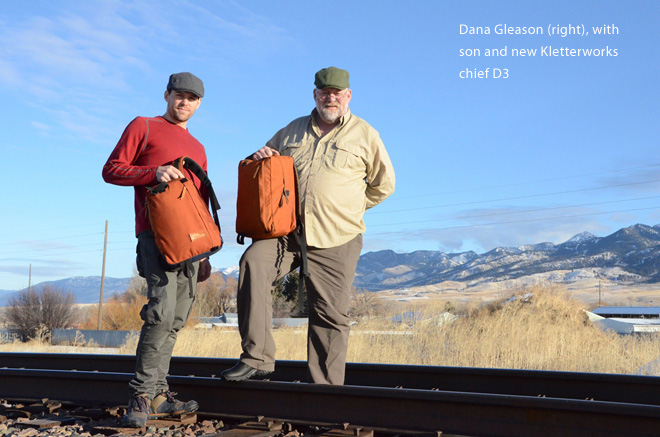
I am having the best time these past few years that I’ve had since 1975.
People call you the Carryologist in Chief.
(Laughs) I haven’t been accused of that in person yet, but cool.
The Mystery Ranch brand really seems to be growing; business is going well?
Yeah. Between the avalanche pack and the ski pack we’ve been getting more awareness in the skiing and outdoor worlds, and we may have had some real effect on how military loads are carried here and in Australia, Canada and a few other places. It’s pretty darned exciting! Having launched Kletterwerks this spring in Japan and Korea, and now launching across the U.S. and into Europe, I hardly know what to think! It’s like we’re a real company!
You are in so many markets and are aggressively becoming a global brand. What motivates you to keep doing new things?
Really interesting problems, really interesting people – and the people we have here which have led me to continue to look at new things. Between doing stuff on the fire line and now edging over to military and a few other places. We’ve had more going on with Levi (Buckingham) right now with some international projects, and D3 (Dana Gleason III), who has really taken on the Kletterwerks line – and has basically done some really nice reworks of my old original classic packs plus a few new pieces. He’s getting back from a few more days in Berlin this evening.
It’s just exciting! We are able to have some real effect and we are able to build better packs for a few people and it’s a gas!
That’s incredible. Along the lines of Kletterwerks, I’ve read you designed the whole line in two weeks…
Well back in 1975 I had been repairing equipment for about 2.5 to 3 years before that and had done a number of individual designs – only one of which came with me here to Bozeman which was a simple hip sack, and in the first two weeks here in Bozeman I didn’t really know anybody and we had the machines and we had most of the materials and I had some uninterrupted time… I can’t tell you we designed every single part of the Kletterwerks but the original Terraplane was designed, a daypack we called the Summit Pack – which was kind of a classic panel loader daypack, a piece called the Day Pack, which was a unique design that had a zip around the top. One of the earliest packs to have compression straps, the Rock Pack, which is something we are going to be reintroducing in about another month at the Capsule Show in New York. There were about a half dozen packs that fell out in that period of time and they all had similar visual vocabulary but I reached a critical mass and that was still the closest I’ve ever come to what I’ve heard called the “Flow” State – where things just kept on happening and it ruled my life for those two weeks.
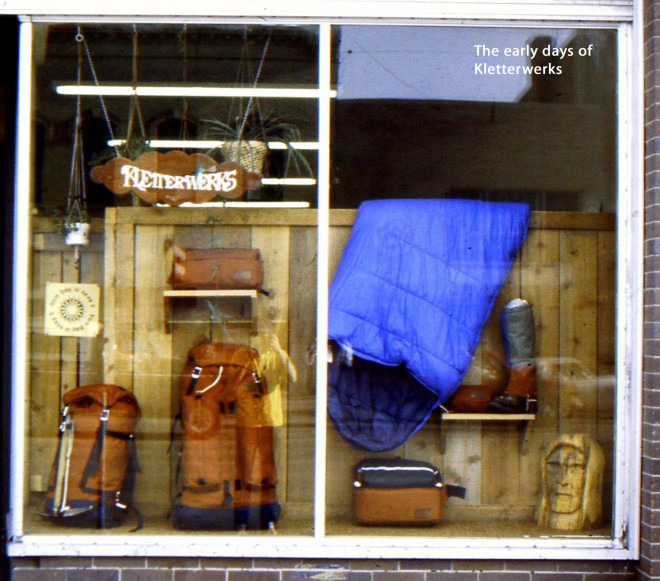
D3 (one of Dana’s sons) you mentioned took the design lead with the Kletterwerks bags; you’re not thinking about retiring again, are you?!
I try and make most mistakes once, if possible, then go on to more interesting mistakes and I don’t think I’ll ever retire. I am becoming a little more accustomed to being able to work with multiple other designers who are really good in their own right, and they are able to work on their own to a great degree and I am able to help direct by figuring out the problems we need to solve and it works great. Although I am about to put everything else aside and drop into about ten days of hardcore design by pretending I’m not here – pretty much within an hour after you’re gone.
Along the lines of design, how do you design new products? Do you use CAD programs like Rhino?
The real core of it is thinking about the need of the user of the bag and what their expectations are going to be. When we are building something for the outdoor market or the lifestyle market, that’s quite a bit more difficult than when we are building for the military or the firefighters because in the lifestyle market or outdoor market we are picking from a much broader base of visual design cues. The look of the pack becomes quite important, and how you interact with people and their self-image while using the gear, it’s always a crap shoot, I don’t know how other companies do it, except it seems to involve an awful lot of sketching, some collages and other things… We tend to do that work “in the head”, then try and turn out pieces that are really performance-based, then the look comes after that.
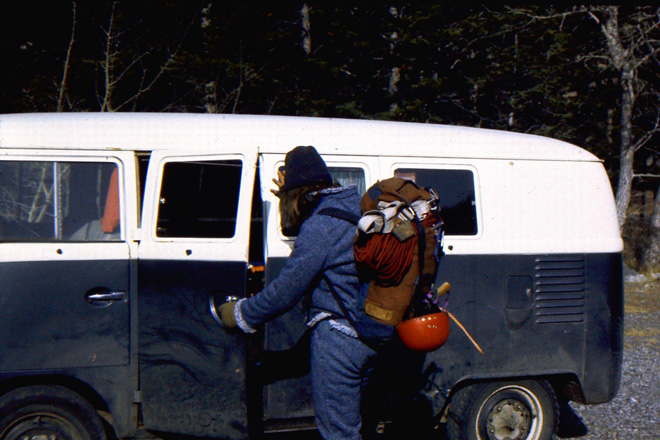
“Gear not art” (Mystery Ranch slogan)
Basically. In some ways it means that we will never have a collection of 15 new book bags per season, we just don’t operate that way. Other companies that do, serve that market much better. A lot of what we do spins off functional designs… Doesn’t mean it can’t be pretty, we love to make it pretty or handsome, but form is following function.
With such a phenomenal career in carry, what are pieces, features, achievements that stand out most for you? What are you most proud of?
Most proud of!? It’s like which child is your favorite! (Laughs) The stuff I did at Kletterwerks really came the closest to coming out of a vacuum, and helped create a visual vocabulary for us – that was pretty cool, yet it passed by for me in just a few years because of business differences with partners. I went on and was precluded from building backpacks for five years, and was coming up with a lot of the basis for modern camera bags. We started out Mojo Systems the same year that Lowepro started out, we were neck and neck for the first two years there before they went overseas and we did not. We kept building for professionals.
We built some of the early computer bags and bags for video gear and a lot of protective equipment. That is where we came up with most of the materials we use in modern framing now: Fiberglass, high density polyethelene plastic (HDPE) and a number of other materials we co-opted much more for shaping camera bags and dealing with impact resistance that turned out to be excellent for building internal frames.
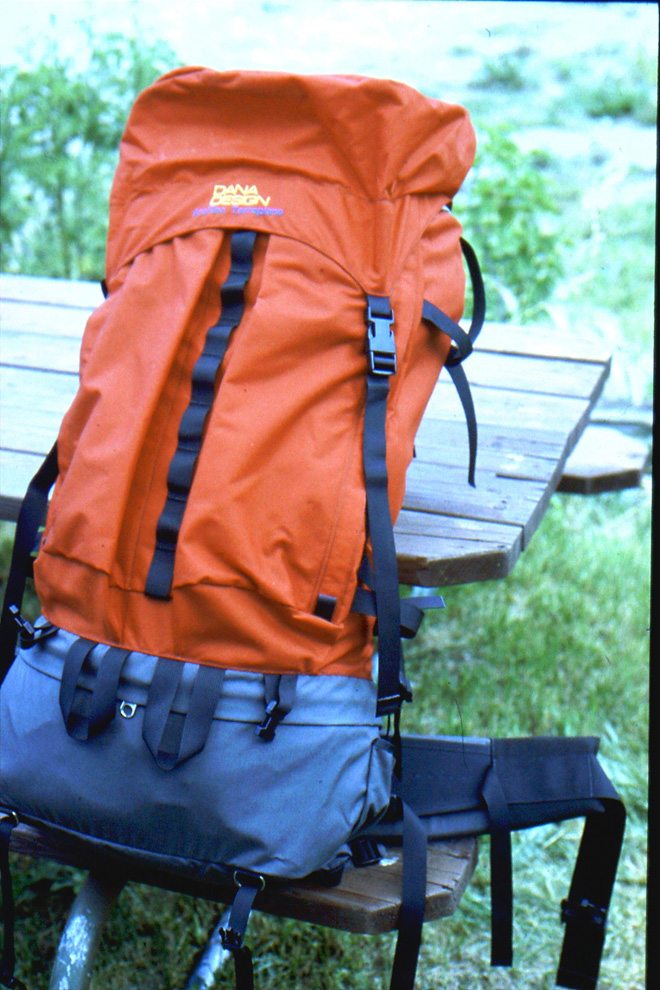
The Dana Design stuff ultimately turned out some of the best internal frames in the world. (Dana Design) was our first unambiguous, market-leading, huge success. It worked out great! Amongst all of these things was building the business, which means building the social system. We built these packs within and tried to build (the company) so that acknowledgment was given, in more than just “Here, here’s your wage” to the people who actually build this stuff. Building the stuff and getting it done right each time is an absolutely essential cornerstone to all of this. It’s simply regarded as a throw-away detail in most companies, they are just going to get it done cheaply and that’s that. It’s an art form. Finding an entire group of customers who truly needed what we do, on a day to day.When we got into Mystery Ranch, that was huge because that gave us another range of fascinating problems to work around, where we’ve been able to have a substantial effect for hudreds of thousands to millions of people. To improve their lives and that is really addictive!
Seeing people who use the stuff after 10 or 15 years, and love it, and it’s part of their life, and in some ways a small part of their self identity, that’s really addictive. That’s cool.
We’ve gotten a few awards on packs through the years… Awards mean nothing.
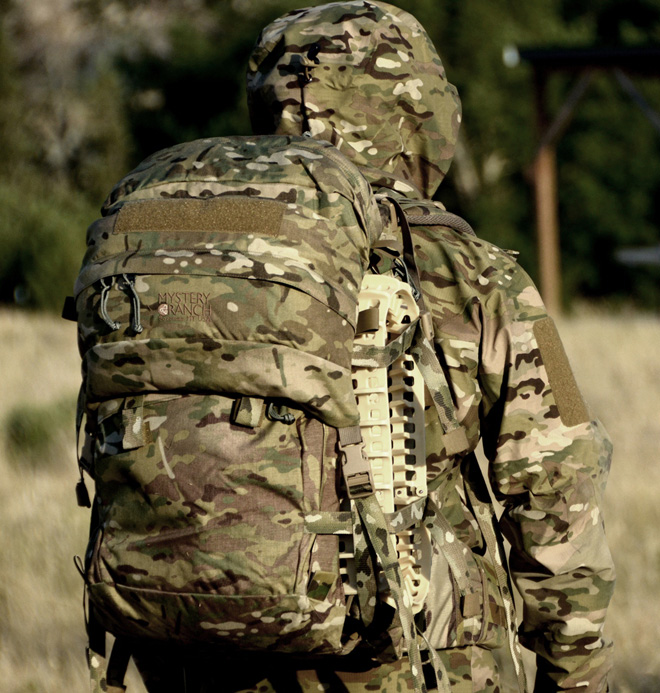
That is very cool. You have a reputation for building durable products; how is that achieved in design and manufacturing?
Well, it’s achieved in both places. When you set out to build something, there are a number of expectations because we started out doing repairs, we started out with a real vision of what failure is like. We want to be able to avoid that kind of failure. That’s one reason we have not gone that far in ultra-light gear because that gear is engineered with one purpose above all – to be lightweight. In a lot of cases, that means you have a definite lifetime built in. We’ve done things I would call semi-light but in those cases we tend to build in a fair amount of frame because we’ve just seen way too many cases where if things go according to plan and you are going with a 15 lb or 18 lb load and sometimes when they don’t you have to go with 30 lbs (meaning taking others’ weight while in the field). The comfort of the pack on the back we’ve always regarded as a result of the machine, the pack, the device for transferring load as opposed to an outgrowth of “the load is almost nothing so it’s not hard to carry”.When you are designing something to be durable, you can design it a couple of ways: You can design it with heavy duty materials throughout and then layer on more and more levels of protection or, the way we try to approach it is start with a reasonable strength of material, which is why we tend to use an awful lot of 500 denier, not exclusively, we’ve played with dyneema and several variants, earlier than that spectra and spectra rip stops.
“A lot of what we do spins off functional designs… Doesn’t mean it can’t be pretty, we love to make it pretty or handsome, but form is following function.”
But we find that durable design is part and parcel of building something that is a relatively efficient design. We try and use seams to channel force, and that is one reason you see some of the shapes on our packs.We try to, instead of using double bottoms that are thousand denier or truck tarp material on the outside which we see in some things, we use the same weight of material on the inside as the out, but we do some tailoring tricks to shrink the inner layer so it takes all the tension of the load and the outer layer is left loose which makes it much more effective than a chafing layer or a layer that avoids abrasion and does not allow moisture to penetrate it as quickly.It’s paying attention to an awful lot of details and it is building the packs so that you are not inducing stress points that can be avoided. Things like running compression straps over zippers instead of sewing them in next to them (to avoid) concentrating force on zippers. Taking a hard look at how materials are actually produced, what the content is and then using it properly, we get into little tiny tricks like our zipper pulls are basically out of the same catalog as everybody else’s, but we tend to get them with a mid-metal plating on them, which produces a much harder surface that doesn’t wear away on the inside of the zipper channels, and so our zippers, even though it is the same coil zip and out of the same catalog, we are able to get roughly 5-6 times better lifetime out of it than the pretty painted zippers.Repair controlled a lot of it, and experience does too. So does a wish to make new and interesting mistakes instead of repeating boring old ones.
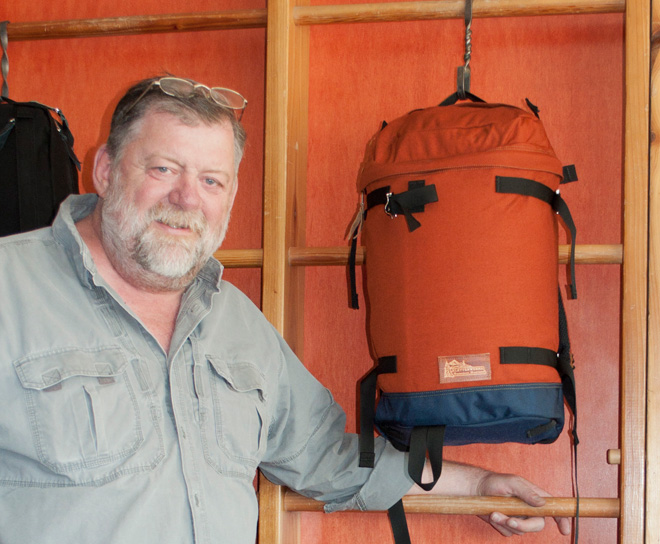
Packs are what we quite often call the answers, but the questions actually in a lot of cases are the most interesting parts.
What bags do you carry daily?
I carry one or two variations of our 3Zip designs. Our 3Zips are something I’m hugely proud of. In the civilian market we build it for skiing and it’s built so you can just grab the top of the pack at the vertex of the two zippers that come down from the top and just rip it open. That is something, because of the angle of zippers, we’ve minimized the wear on the zips and they will last for many years being absolutely abused. The ability to open the whole main bag without everything else spilling out is great.That is something we’ve had pretty good success with in the ski world; in the military world it turned out to be a perfect combination of access and toughness. There, we do tens of thousands into the US military. The Australian military is issuing it to every one of their guys – called diggers, and basically they love it. It’s been very heartening, that it started out as a ski pack in what we would call a gay selection of colors and it migrated into some of the hardest to work with environments on earth. You can’t imagine what the first supply sergeant said when I said “Yeah, we’ll just build the camouflage version of our Sweet Pea pack.
It seems like a lot of people are into that tri-zip design; it was recently used in a CamelBak.
That was actually a licensed variation. We’ve had a relationship with CamelBak for a number of years, and it’s not a matter of “they own us or we own them”, I can assure you neither is true, but we came up with some things that we cooperated on for a number of years and they had done us some favors so we licensed that design to them. So it’s not only the 3Zip, but our stretch adjustment system, sometimes called the Futura Adjustment System as well. It has helped improve carry for a lot of people who take hydration seriously.
Are you likely to try more cross-company integration in the future?
We’ve done one or two collaborations in the fashion world and we are probably going to be looking to do some more down the line. In the outdoor world, probably not so much because this stuff is starting to become a little more available with the Kletterwerks line, which is the first stuff we have sold into stores in almost a decade, as opposed to selling ourselves directly which is how we’ve done business most of this century.
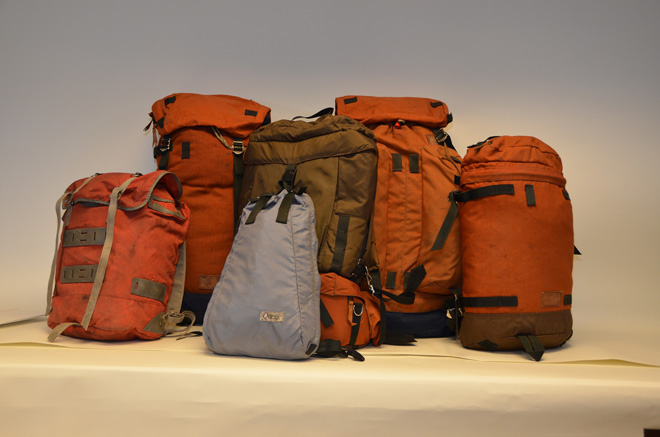
One final question. With a global community of carry nuts reading these words, what should we have asked you?
(Laughs) There are a lot of different things, I suppose. I have to tell you…especially when we start dealing with what people in Korea or in Japan or Australia or Germany look at as local differences that matter to them. Being able to travel around some and plumb those differences, and build things that work for each group is fascinating. It’s not that our backs are so entirely different although there are minor differences here or there, it’s a matter of not just the backs but the expectations can be different… Being able to build things to a bit more of a local environment as opposed to building what we build in the US because we are purely in the US is a fascinating venture. The collaborations that can come out of it are going to be extremely entertaining over the next few years.
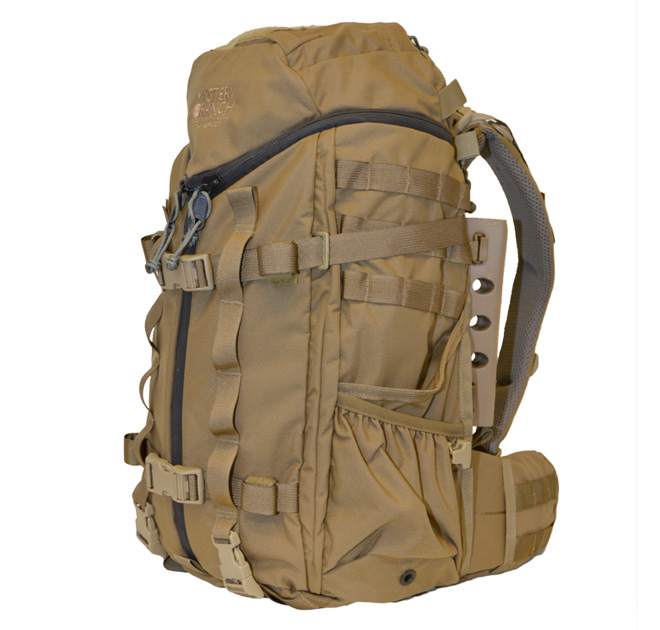
—
This post was pulled together with a lot of help from John Canfield – JC was instrumental in organising the interview with Dana and helped source the imagery. Thanks, John.





 Carry Awards
Carry Awards Insights
Insights Liking
Liking Projects
Projects Interviews
Interviews



